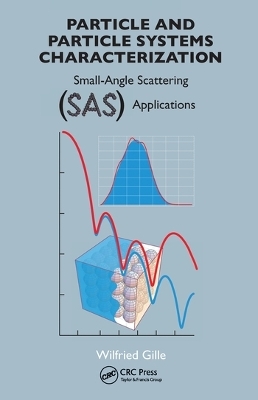
Particle and Particle Systems Characterization
Small-Angle Scattering (SAS) Applications
Seiten
2020
CRC Press (Verlag)
978-0-367-57625-7 (ISBN)
CRC Press (Verlag)
978-0-367-57625-7 (ISBN)
Small-angle scattering (SAS) is a powerful technique for investigating the whole set of geometric parameters describing (micro)particles embedded in a material. Particularly, disordered particle assembles can be explored via SAS. This book explains several models and approaches of SAS for the study of densely packed systems. Written by one of th
Small-angle scattering (SAS) is the premier technique for the characterization of disordered nanoscale particle ensembles. SAS is produced by the particle as a whole and does not depend in any way on the internal crystal structure of the particle. Since the first applications of X-ray scattering in the 1930s, SAS has developed into a standard method in the field of materials science. SAS is a non-destructive method and can be directly applied for solid and liquid samples.
Particle and Particle Systems Characterization: Small-Angle Scattering (SAS) Applications is geared to any scientist who might want to apply SAS to study tightly packed particle ensembles using elements of stochastic geometry. After completing the book, the reader should be able to demonstrate detailed knowledge of the application of SAS for the characterization of physical and chemical materials.
Small-angle scattering (SAS) is the premier technique for the characterization of disordered nanoscale particle ensembles. SAS is produced by the particle as a whole and does not depend in any way on the internal crystal structure of the particle. Since the first applications of X-ray scattering in the 1930s, SAS has developed into a standard method in the field of materials science. SAS is a non-destructive method and can be directly applied for solid and liquid samples.
Particle and Particle Systems Characterization: Small-Angle Scattering (SAS) Applications is geared to any scientist who might want to apply SAS to study tightly packed particle ensembles using elements of stochastic geometry. After completing the book, the reader should be able to demonstrate detailed knowledge of the application of SAS for the characterization of physical and chemical materials.
Wilfried Gille
Scattering experiment and structure functions; particles and the correlation function of small-angle scattering. Chord length distribution densities of selected elementary geometric figures. Chord length distributions of infinitely long cylinders. Particle-to-particle interference – a useful tool. Scattering patterns and structure functions of Boolean models. The "Dead Leaves" model. Tessellations, fragment particles and puzzles. Volume fraction of random two-phase samples for a fixed order range L from γ(r,L). Interrelations between the moments of the chord length distributions of random two-phase systems. Exercises on problems of particle characterization: examples.
| Erscheinungsdatum | 01.07.2020 |
|---|---|
| Verlagsort | London |
| Sprache | englisch |
| Maße | 156 x 234 mm |
| Gewicht | 644 g |
| Themenwelt | Naturwissenschaften ► Biologie |
| Naturwissenschaften ► Physik / Astronomie ► Festkörperphysik | |
| Technik ► Maschinenbau | |
| Technik ► Umwelttechnik / Biotechnologie | |
| ISBN-10 | 0-367-57625-2 / 0367576252 |
| ISBN-13 | 978-0-367-57625-7 / 9780367576257 |
| Zustand | Neuware |
| Haben Sie eine Frage zum Produkt? |
Mehr entdecken
aus dem Bereich
aus dem Bereich


